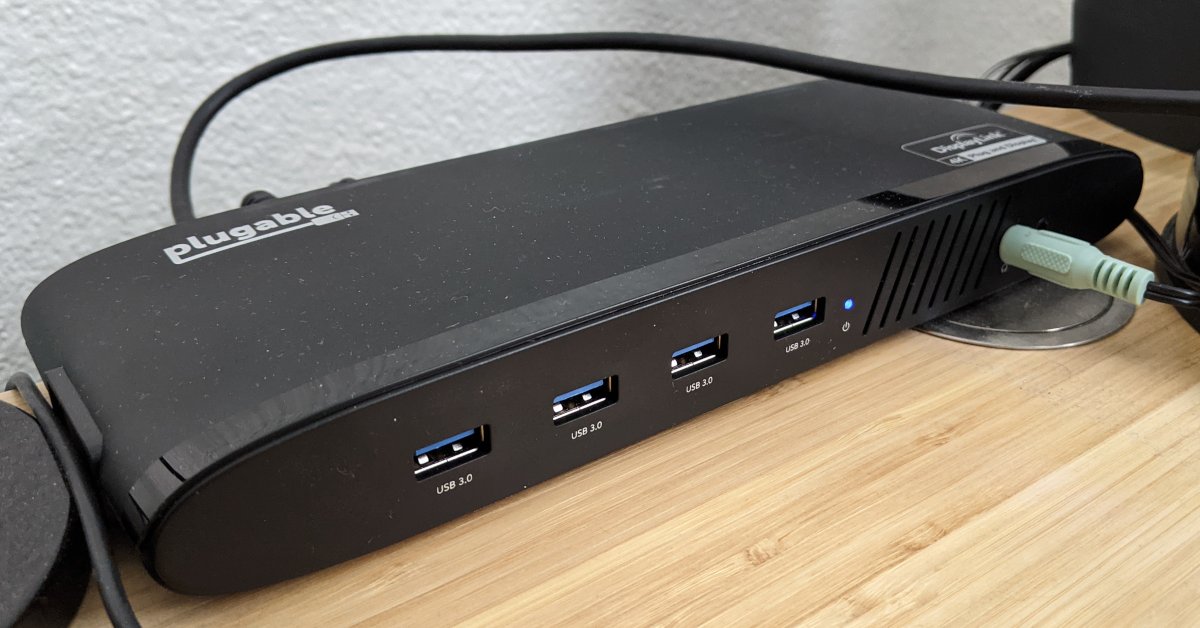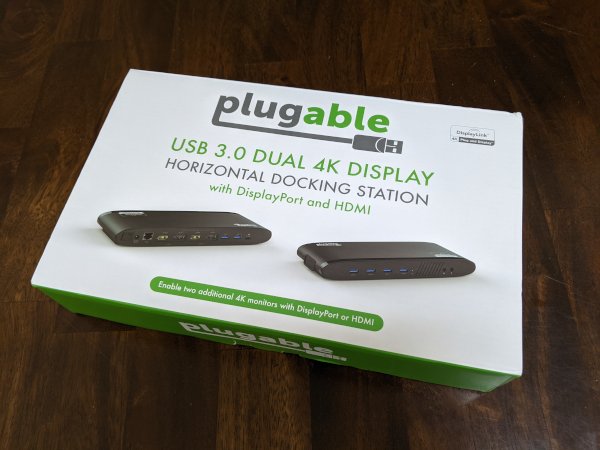
DisplayLink Docks and Ubuntu
Can you use a DisplayLink dock with Ubuntu? And, more importantly, should you? I recently researched this for a dock I wanted to buy for myself, and here’s what I found.
If you’re thinking about getting a DisplayLink dock for your laptop, you might not even be sure if the dock will work with Ubuntu. Well, there’s good news! I used a Plugable UD-6950H with Ubuntu without problems, and it seems reasonable to expect similar docks to work as well. In fact, there’s a good chance your DisplayLink dock works with Ubuntu even if it says it doesn’t. That’s because, fundamentally, any DisplayLink dock uses a DisplayLink chip, and DisplayLink (the company that develops DisplayLink technology and chips for various dock manufacturers) offers Ubuntu drivers themselves. If you have the DisplayLink software installed, connecting a DisplayLink dock is just like connecting anything else over USB, so it’s likely to work without problems, even on Ubuntu, on a wide variety of laptops.
DisplayLink docks fit certain uses really well (and others not so much). Their biggest advantage is that they can send video over a normal USB 3.0 (or USB 2.0 or USB-C) connection, so you can connect the dock to almost any laptop on the planet! (Including laptops running Ubuntu!) You can connect your keyboard, mouse, audio, ethernet, monitor, and other peripherals to the dock, and plug a single USB cable into your laptop to get all those connections. DisplayLink docks are also particularly well suited for connecting different laptops with different display outputs to the same dock. But of course, you have to make trade-offs. Because DisplayLink compresses your video to be able to send it over USB, it doesn’t do well with video playback, gaming, or other high-framerate applications. (I tried watching a fullscreen 1080p video, and while it played it was stuttering just enough visually to feel disorienting.) I should mention that there’s no noticeable slowness aside from video/gaming – if only a small part of the screen is changing, the compression works incredibly well. I was able to do a full day of work (programming, web browsing, Slack, etc) on a DisplayLink dock and wouldn’t have known the difference from a DVI monitor connection.

The specific DisplayLink dock I recently bought is a Plugable UD-6950H. I chose this model specifically because it’s a relatively modern dock (supports higher resolutions) that’s compatible with USB-3.0, and I wanted to use it with a laptop that doesn’t have USB-C. But purchasing a dock like this for Ubuntu is certainly a little confusing. It isn’t advertised with Ubuntu compatibility. In fact, on the product page, it literally says:
Not compatible with: Linux/Unix
However, as I mentioned above, it actually is compatible with Linux (and Ubuntu specifically) because it uses DisplayLink, and DisplayLink provides Ubuntu software. I’m not sure why it isn’t advertised as compatible with Ubuntu, but my hunch is that Plugable doesn’t want to guarantee support for Linux – if it doesn’t work, it’s not their problem. That’s fine; I don’t really fault them for it because I’m sure Ubuntu’s market share is small enough that it doesn’t really make sense for them to officially support. But the dock does work great with Ubuntu. I’m actually typing this blog post on my UD-6950H on Ubuntu, and the experience has been incredibly smooth! So, as far as I can tell, DisplayLink docks should generally be compatible with Ubuntu, and they fill a nice niche for someone who wants to regularly connect different laptops to their desk monitor, keyboard, and mouse. (Though, of course, I haven’t personally tested every DisplayLink dock myself, so the usual YMMV caveat applies here.)

How do I connect a DisplayLink dock with Ubuntu?
Updated: As of June 2023, Synaptics provides an apt repository that contains the drivers. The instructions below have been updated to recommend that as the easiest installation method.
-
Download the Synaptics APT Repository package from Synaptics. (The instructions below should roughly match the instructions you see there.)
- Install the repository package:
$ sudo apt install synaptics-repository-keyring.deb - Update apt:
$ sudo apt update - Install the DisplayLink driver:
$ sudo apt install displaylink-driver
In summary, DisplayLink docks work great with Ubuntu. The driver is easy to install and works well, and the overall experience is smooth. The biggest downside you’ll notice is that videos, games, and other high framerate applications don’t look great. This isn’t a problem with Ubuntu – it’s just the way DisplayLink works. But if you want to primarily use your dock for web browsing, writing, programming, spreadsheets, or any other office-like use, it will probably work great, and you’re unlikely to notice any “slowness” at all!
About the Author

👋 Hi, I'm Mike! I'm a husband, I'm a father, and I'm a staff software engineer at Strava. I use Ubuntu Linux daily at work and at home. And I enjoy writing about Linux, open source, programming, 3D printing, tech, and other random topics. I'd love to have you follow me on X or LinkedIn to show your support and see when I write new content!
I run this blog in my spare time. There's no need to pay to access any of the content on this site, but if you find my content useful and would like to show your support, buying me a coffee is a small gesture to let me know what you like and encourage me to write more great content!
You can also support me by visiting LinuxLaptopPrices.com, a website I run as a side project.
Related Posts
- Docks and Ubuntu 09 Aug 2021
- Dell Latitudes are Great Laptops (and they run Ubuntu well) 12 Aug 2021
- Why I Love Ubuntu as a Desktop OS 24 May 2020